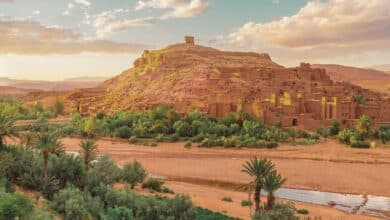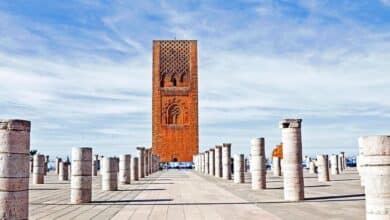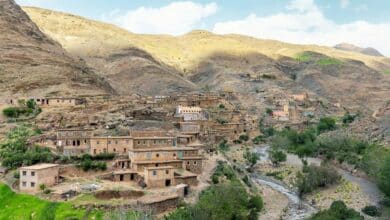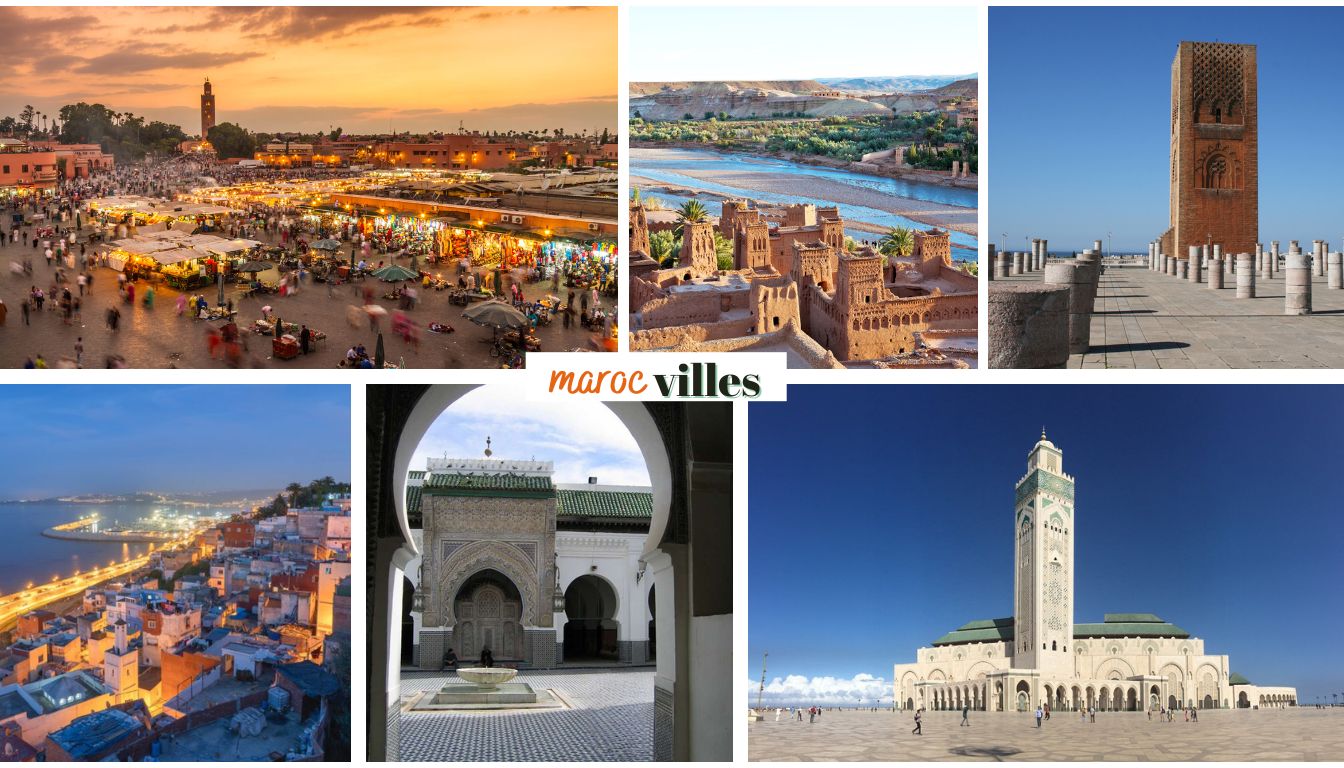
Morocco is a large country, covering 710,850 km² with Western Sahara . It offers a diversity of breathtaking landscapes. It is a country of contrasts and splendors, inviting you to discover its Moroccan destinations rich in history.
Marrakech , Ouarzazate , and Chefchaouen show particular Berber architecture . These Moroccan cities offer more than just beautiful buildings. They also offer exceptional culinary experiences. Spices and flavors come together to dazzle the taste buds.
Morocco is known for its variety of landscapes. It has beaches stretching over 3,600 km, oases, and impressive mountains. These settings offer spaces for rich and varied cultural journeys . Each part of Morocco contributes to its unique cultural mosaic.
Marrakesh
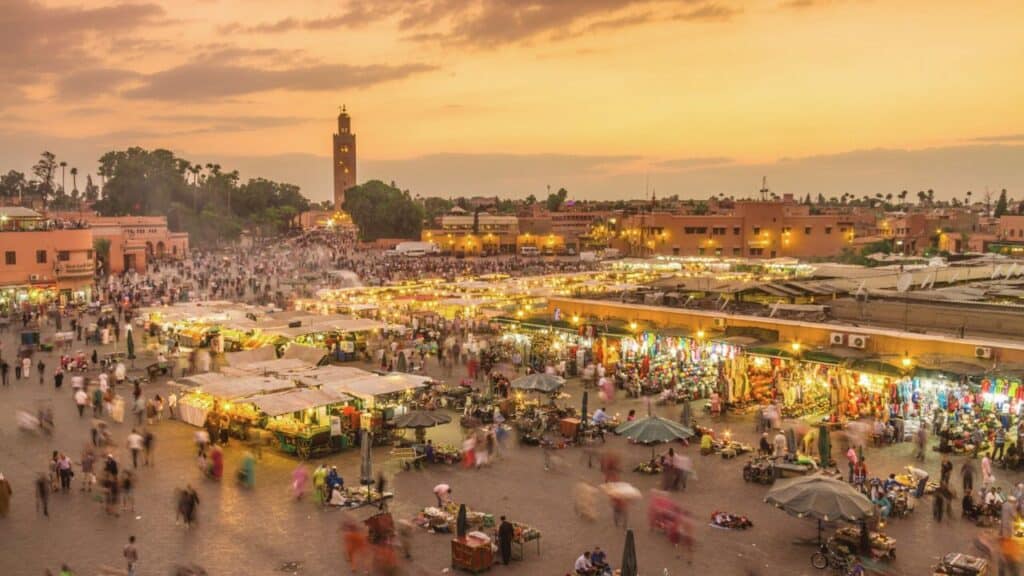
Did you know that the medina of Marrakech extends over 600 hectares? It is the most populated in North Africa. Marrakech is a city of contrasts. In 2019, nearly three million people visited it. They were attracted by its beauty and its history. With its many assets, the city is ranked third in Morocco.
More than a million people live in Marrakech. They share a space of 230 km². The city is known for its unique heritage. It combines tradition and modernity wonderfully. When visiting Marrakech, you will discover its souks and riads. Without forgetting the gardens like the Jardin Majorelle which will enchant you.
Don’t forget to visit the famous Jemaa el-Fna square . It is the meeting point of the city, always full of activities. The Bahia Palace is also a must-see place. Marrakech offers you a taste journey. You can taste the delicious Moroccan cuisine . It also offers nature experiences. The Oukaimeden ski resort and the Ouzoud Waterfalls are places not to be missed.
Casablanca
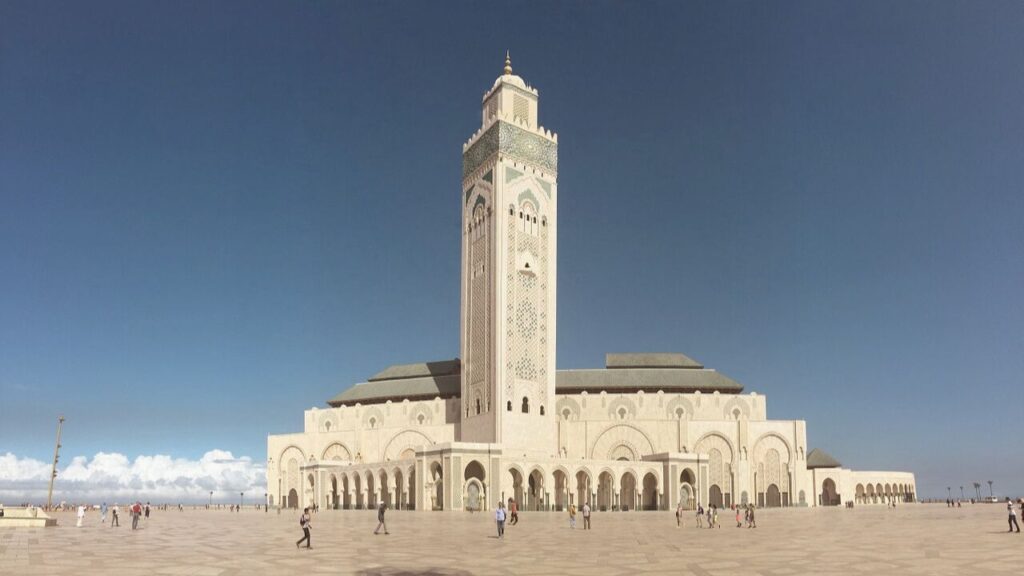
Do you know that Casablanca has the tallest minaret in the world? It rises to 210 meters. This city is very dynamic. It has 3,566,020 inhabitants in 2020. Casablanca is the cultural and economic heart of Morocco. It is often called an “open-air museum”. The city abounds with modern and attractive architecture . It ranges from Art Nouveau to Art Deco, including neo-Moorish elements.
The Hassan II mosque is a true marvel. It can accommodate 25,000 worshipers. This mosque shows the modern side of Casablanca architecture. Designed by a Moroccan subsidiary of Bouygues, Bymaro, it goes beyond the simple spiritual aspect. The former Anfa, now Casablanca, trots into the hearts of its visitors. Everyone is attracted by its artistic and economic events. We also discover lively neighborhoods like the Habous Quarter and the famous Corniche. Its streets are full of street art and history. It is the perfect place to explore the city’s heritage treasures.
Fez
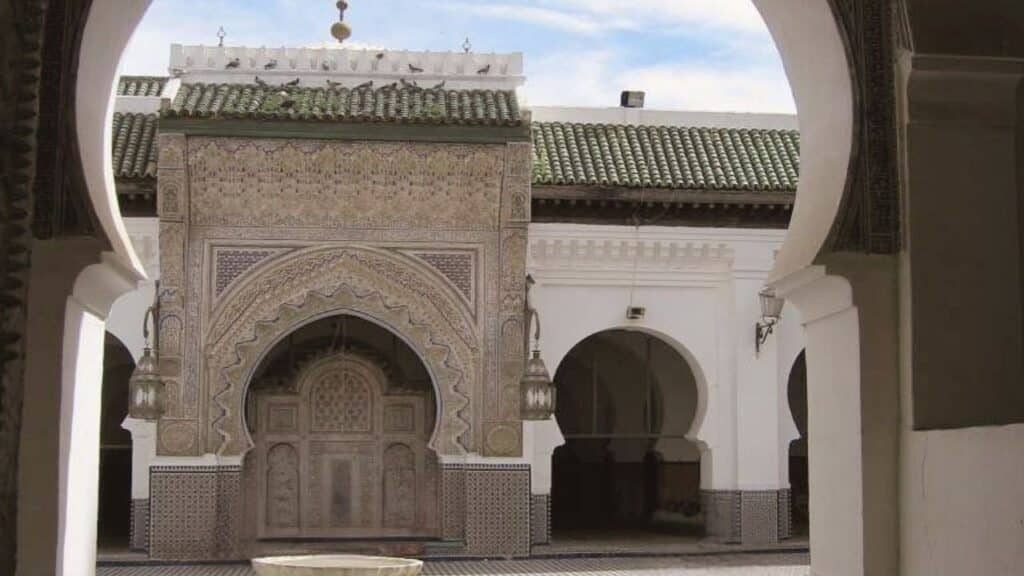
Did you know that the population of Fez has increased by more than 200,000 inhabitants in just seven years? In 2015, it was 1,150,131, reaching 1,365,000 inhabitants in 2022. This shows how lively this city is, nicknamed “the spiritual capital” of Morocco.
Since 1981, the medina of Fez has been listed as a UNESCO world heritage site . It covers 280 hectares, forming a labyrinth where each alley reveals a part of history.
Fez el-Bali, its historic heart, was founded in the 8th century. It is an architectural treasure with gems such as the Attarine Madrasa. There is also Al Quaraouiyine University, among the oldest in the world.
The gardens of Fez , like the Jnan Sbil renovated in 2010, offer seven hectares of nature in the city. The density is 3,219 inhabitants per km², over an area of 424 km². This shows how the city combines heritage with modern and varied life .
Rabat
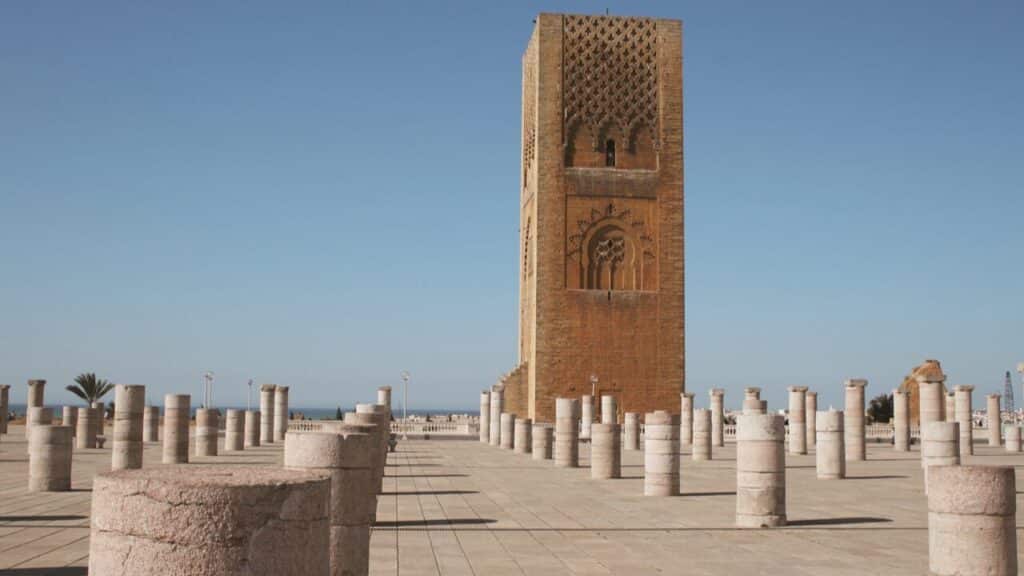
Rabat is the capital of Morocco . Its urban population has exceeded 1.7 million inhabitants since 2014. This places it just behind Casablanca in terms of size.
It was founded in the 12th century by the Almohads. Since then, the city has modernized while retaining its history.
In 2012, Rabat was listed as a UNESCO World Heritage Site. There are important historical sites there. For example, the Oudayas kasbah and the Chellah necropolis.
This city perfectly combines old buildings and current dynamism. It offers an experience combining tradition and modernity.
Rabat has a mild climate, with the Atlantic and plains nearby. This invites you to visit its beaches, gardens, and its historic center. It is a place where tradition and modern life meet, ideal for lovers of culture and history.
Tangier
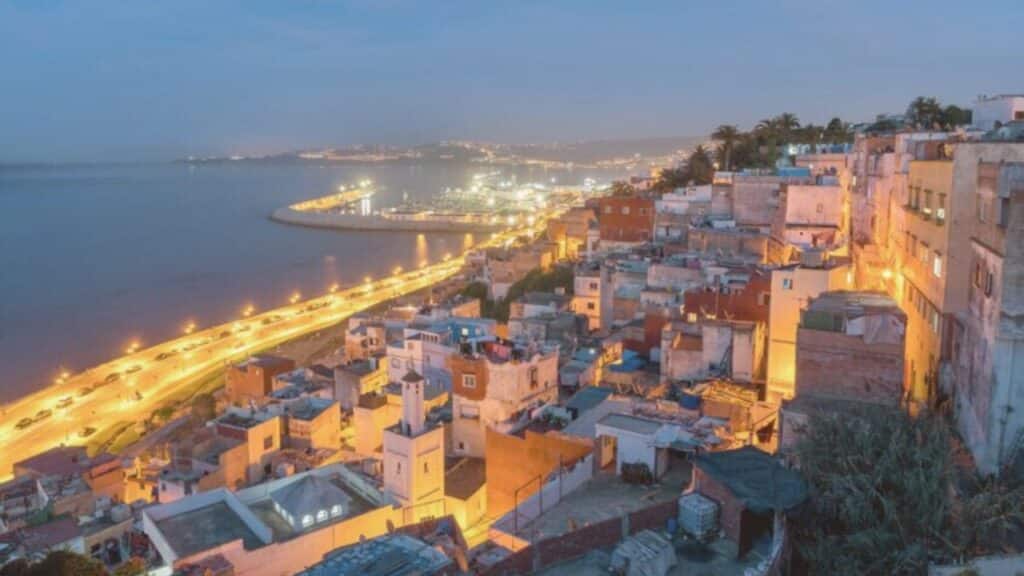
In 2014, Tangier had approximately 947,952 inhabitants , an impressive number. This city has experienced rapid growth for 50 years. Its popularity comes from its cultural diversity and its location between Europe, Africa and Berber influences. Today, it is a place for meetings between different cultures. There we find people from regions like the Rif and capable of mixing local traditions and modernity.
The cultural heritage of Tangier is seen everywhere. The medina of Tangier is a maze of charming streets. She carries a whole past within her. The Kasbah of Tangier , located high up, offers a superb view of the Mediterranean . This is where it all began, and this place attracts many visitors in search of Moroccan history and cultural diversity.
Agadir
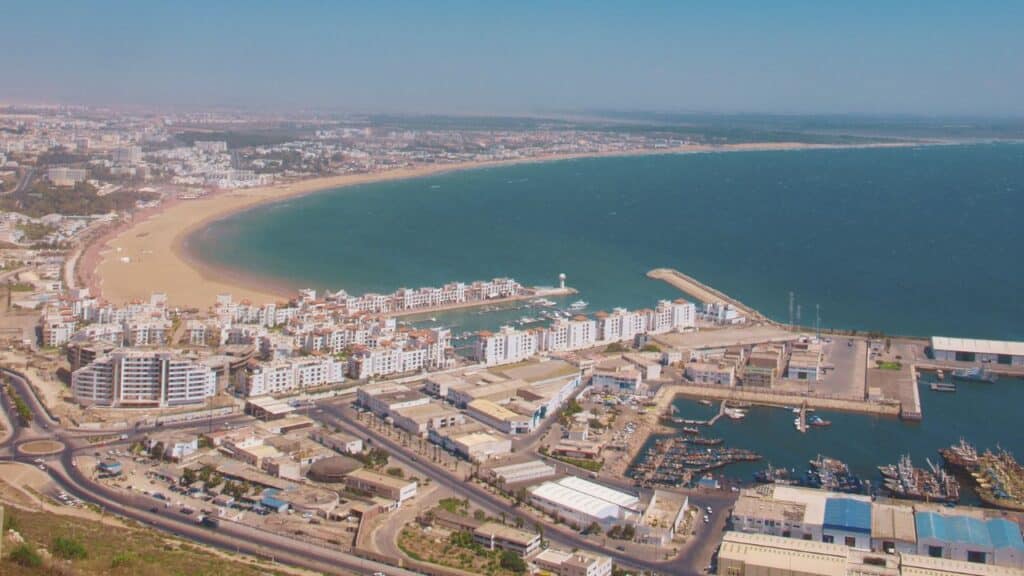
Agadir has become a very popular place, welcoming nearly 979,248 people in 2023. This is impressive when compared to the 10,680 inhabitants in 1950.
This quick change clearly shows its unique charm. We see it in its reconstruction after the severe earthquake of 1960. This city attracts people from all over the world with its sandy beaches, splendid weather and its proximity to the Souss-Massa National Park.
Not only has its look been redesigned, but the roads and means of travel have also been improved. This includes cheap flights and highways. Agadir is therefore ideal for a sunny holiday, even offering surfing in Taghazout .
Meknes
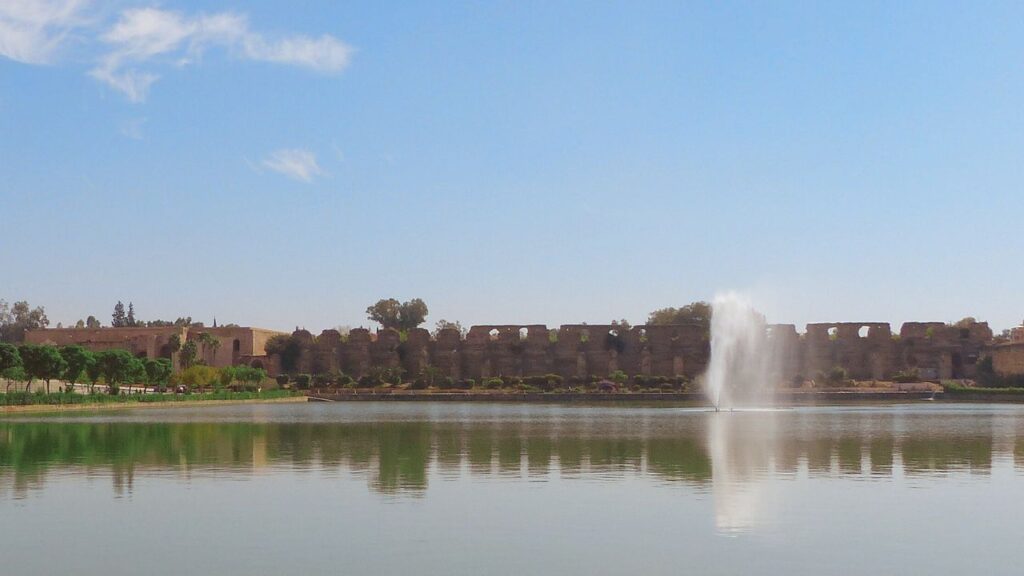
Do you know that Meknes is the 6th largest city in Morocco? In 2014, it had 632,079 inhabitants. This makes it a very populated city, with 1,708 inhabitants per km².
It is located at an altitude of 552 meters. Meknes was founded in the 11th century by the Almoravids. This imperial city has a very rich historical heritage.
Since 1996, Meknes has been a UNESCO World Heritage Site. Its architecture mixes Islamic and European styles from the 17th century. This mixture bears witness to its era of glory under Moulay Ismaïl (1672-1727).
Meknes impresses with its historical monuments . There we find the Bâb Mansour gate, the Dar Jamaï Palace , and the Bou Inania madrassah. These buildings show the beauty of Islamic architecture.
It is not only the history that attracts here, but also the economic activity. Meknes is important for agricultural and wine production. The automobile industry is also present.
But, Meknes attracts fewer tourists than other cities in Morocco. This is due to the lack of hotel infrastructure. Fortunately, there are plans to improve this.
Visit Meknes to see its 15-meter ramparts and many historic buildings. Discover the gems of this unique Moroccan city. It is a true treasure of Morocco, an example of a fortified city in the Maghreb.
Ouarzazate
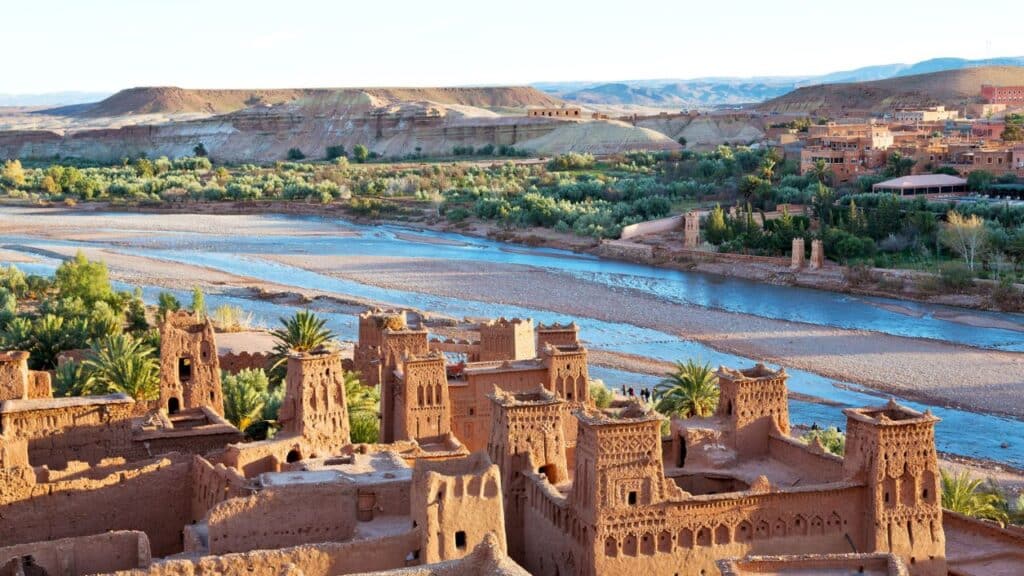
Ouarzazate records more than 400,000 overnight stays per year. That’s impressive for a city with only 112mm of rain. It is called “the Hollywood of Morocco” because it is close to the Sahara. It is home to Kasbah Aït Benhaddou , a UNESCO site. The city is located at 30° 55′ 23″ north and 6° 54′ 15″ west. Its altitude is 1,151 meters, with an area of 305 km².
In 2014, Ouarzazate had 71,067 inhabitants. Almost a third of them were under 15 years old. The number of births has decreased over the years, from 5.9 to 2.5. The Noor solar power project has helped a lot.
Thanks to this project, the city’s economy is improving. Tourism and cinema are very important there. Sites like Kasbah Taourirt and Atlas Studios attract a lot of people. They show the natural beauty and culture of the region.
Ouarzazate is near the desert, a perfect location for films. Hits like “Gladiator” and “Asterix & Obelix” were filmed there. The city has 27 rated hotels and more than 4,500 beds. It is also a great place for adventure lovers. You can discover the Sahara there with expert guides.
Chefchaouen
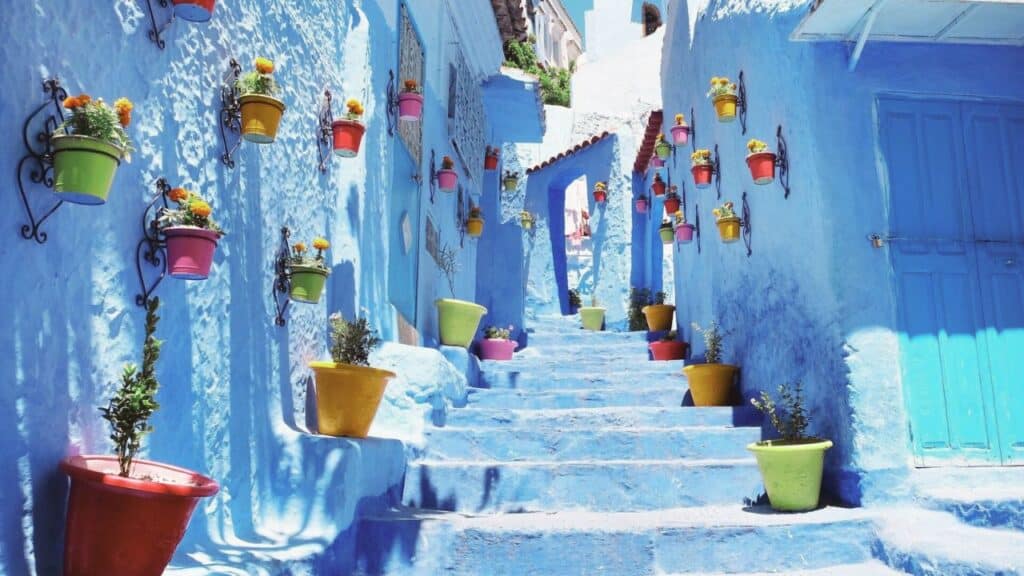
Chefchaouen is a small town. It has been home to 42,786 inhabitants since 2014. It is located at an altitude of 600 meters, near Mounts Kelaa and Meggou. This city, known as the Blue City , is in the heart of Morocco’s Rif Mountains. It offers unique views and quiet streets.
Temperatures in Chefchaouen change a lot. In January, it is only 7°C, while in August, it can be up to 38°C. Despite the 1,082 mm of rain per year, the blue medina attracts many visitors. It is a charming place just 112 km from Tangier and 197 km from Fez.
In the city, one can visit important places. Like the Kasbah, which has an ethnographic museum, and the Grand Mosque with an octagonal minaret. Chefchaouen is also known for its good food and homestays. Prices to stay there are around 200/250 DRH.
Essaouira
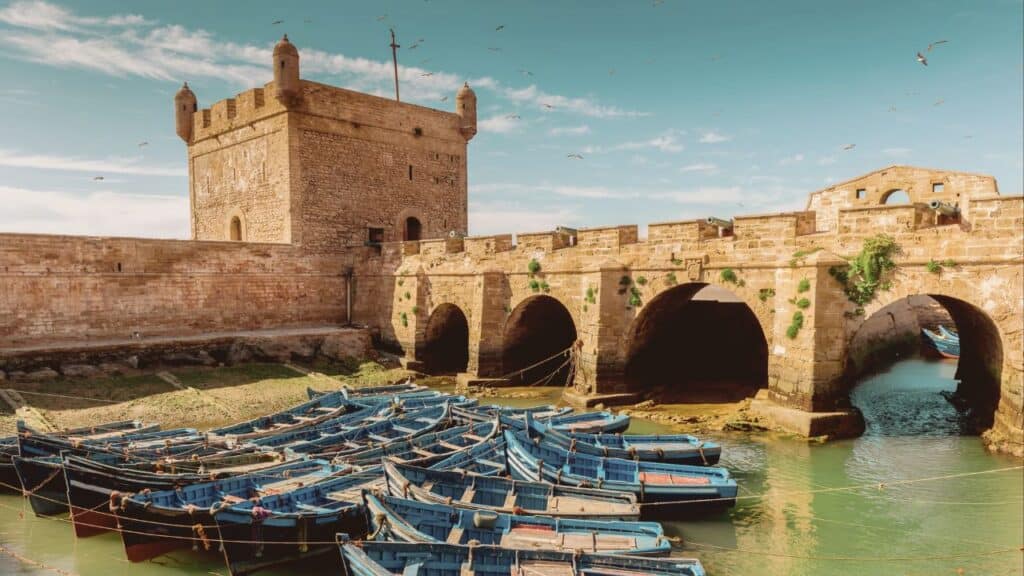
Essaouira is nicknamed the “city of trade winds” for its numerous falcons. These birds live on the island of Mogador. The city is known for its beautiful beaches and its tranquil atmosphere.
It is located halfway between Agadir and Marrakech. Its climate is pleasant, with average temperatures of 25°C throughout the year. It is a perfect place for water sports enthusiasts.
Espaouira is famous for its places suitable for kitesurfing, windsurfing and surfing, thanks to its strong winds. Its medina, listed as a UNESCO world heritage site, is a maze of alleys. There are lively souks , such as the fish market and the spice market.
In the heart of the medina, tourists discover the maritime essence of the city. They can admire its ancient ramparts. Essaouira is a city where you immerse yourself in a rich and artisanal culture.
Tetouan
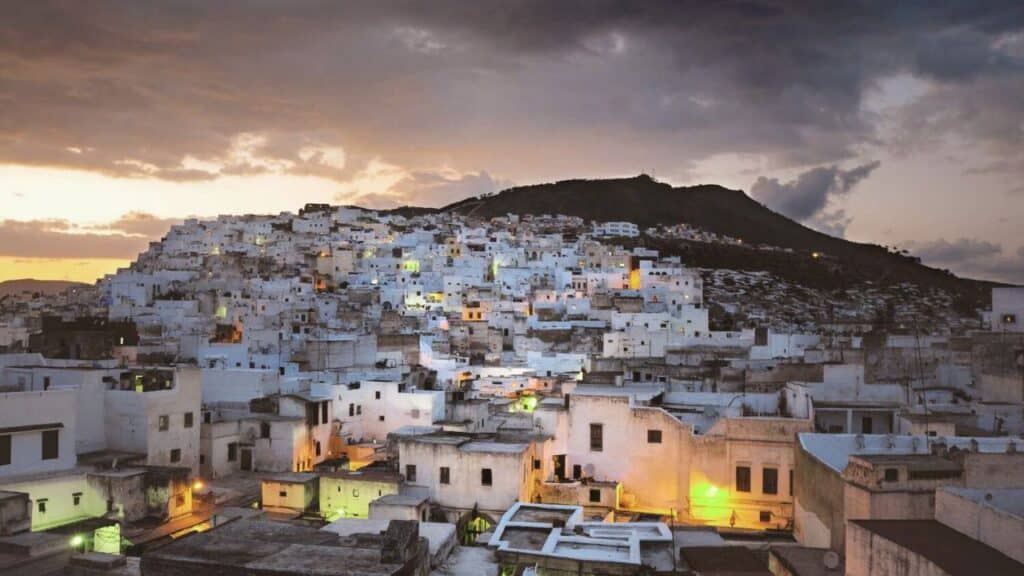
Tetouan was founded in the 3rd century BC and it has over 402,118 inhabitants now. It is a charming town in northern Morocco. Its medina has been a UNESCO World Heritage Site since 1997. It is famous for being the best preserved in the country. It features a unique blend of Andalusian, Spanish and Moroccan architecture after independence. This shows its rich past.
The medina of Tetouan immerses you in Moroccan history. It is in Andalusian, Jewish and Berber areas. Walking these streets means discovering artisan workshops. You will also see real markets, like that of Bab Nouader. The city has an impressive neighborhood, the Ensanche Español. It is the best designed in all of Morocco, mixing Hispano-Moorish styles.
In the socio-cultural side, most people in Tetouan come from other places. There are Andalusians, Moriscos, Sephardic Jews, and families from Fez and Algeria. In the 1960s, many Jewish families left the city. They joined France, South America and Israel. But today, Tetouan shines with its authenticity and its rich and varied Mediterranean heritage.
El Jadida
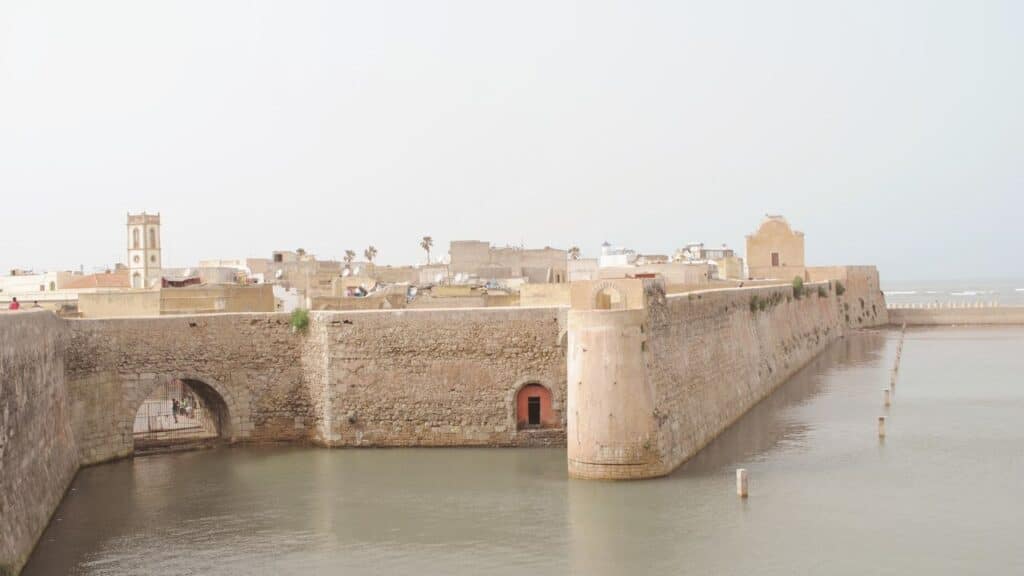
El Jadida , formerly called Mazagan, became a UNESCO site in 2021. The city has 217,975 inhabitants. It is known for its Portuguese heritage and its magnificent beaches.
The Portuguese cistern is famous there. It is an architectural gem from the colonial era. El Jadida is located 100 km south of Casablanca. It has many historical sites, testifying to the past when Muslims, Christians and Jews lived together.
El Jadida is also known for its events. The International Horse Show attracted 260,000 visitors in 2015. The Moussem of Moulay Abdellah Amghar saw more than 500,000 people the same year. These events show the cultural charm of the city.
From its lighthouse to its Portuguese city, the city ideally combines past and present. El Jadida is a history-rich, seaside adventure. Every street corner tells you a captivating story.
Safi
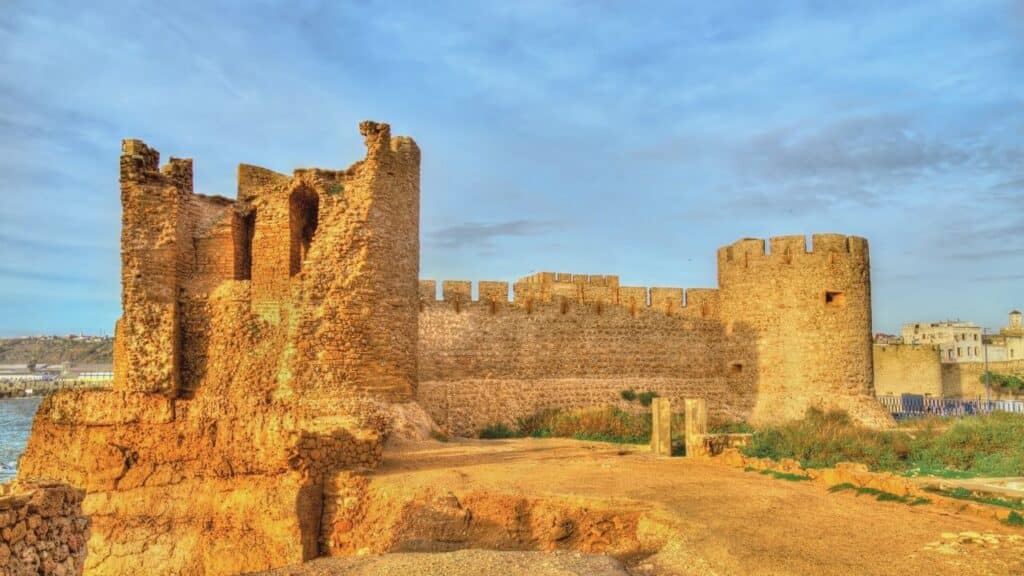
Did you know that Safi was a major port in the 12th century? This was important to the Almohad Empire, enabling trade with Andalusia.
Over the centuries, Safi has become a place of cultural and commercial exchange.
In the 1190s, Abu Mohamed Saleh founded a fortified convent in Safi . This gave the city national and international religious importance.
Later, in the 14th century, Safi expanded with the addition of a madrsa and a hospital. This made it a strategic commercial center.
The city began to connect places like Genoa, Seville, and Marseille.
Between 1509 and 1541, Safi was under the control of the Portuguese. It was a crucial stronghold for them.
Although Safi’s trade slowed in the 19th century, the town retained its importance.
She helped open Morocco to international trade. Safi was particularly known for its diverse Jewish community.
At the beginning of the 20th century, Safi experienced a new industrial era thanks to fishing.
In the 1950s, it was the leading port for sardines in the world.
Today, Safi is still famous for its pottery and continues to grow. It also attracts surfers with its waves.
From 2014 to 2020, the city’s population increased from 308,508 to 817,976 inhabitants.
Kenitra
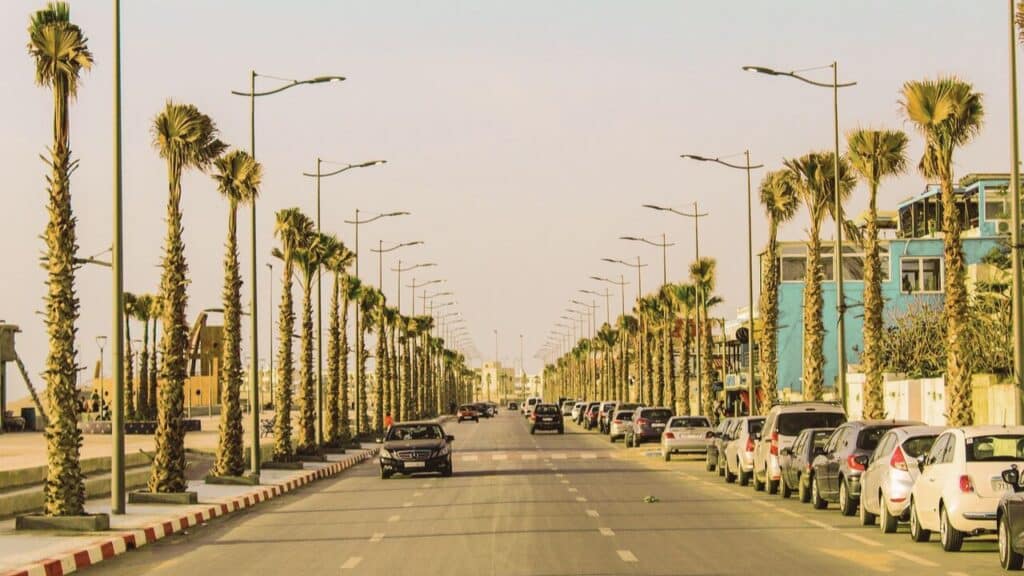
Did you know that Kenitra has 473,703 inhabitants? In 2020, its density was 6,233 inhabitants per km². This makes it a very populated city in Morocco.
It is located at the mouth of the Sebou River. This position offers it a beautiful colonial history and a modern aspect. Kenitra is very active on the commercial level.
In 1912, Hubert Lyautey launched the modernization of Kenitra . Since then, the city has mixed glorious past and current vitality. It is on the south bank of the Sebou, a short distance from the Atlantic.
Kenitra charms with its rich colonial past and its unique river port in Morocco. These assets, and its place of choice in the industry, make it a special city.
Kenitra is today led by Mayor Anass El Bouanani. She maintains a balance between her heritage with Thamusida and modernity. Development, like the Atlantic free zone, is a big plus.
The city does not only have economic advantages. It also offers magnificent places, such as its beaches and the Maamora forest. Without forgetting its unique architecture. Kenitra is a city of harmonious contrasts.
Kenitra is a jewel of Morocco. Between her potential and her magnificent past, she seduces.
Nador
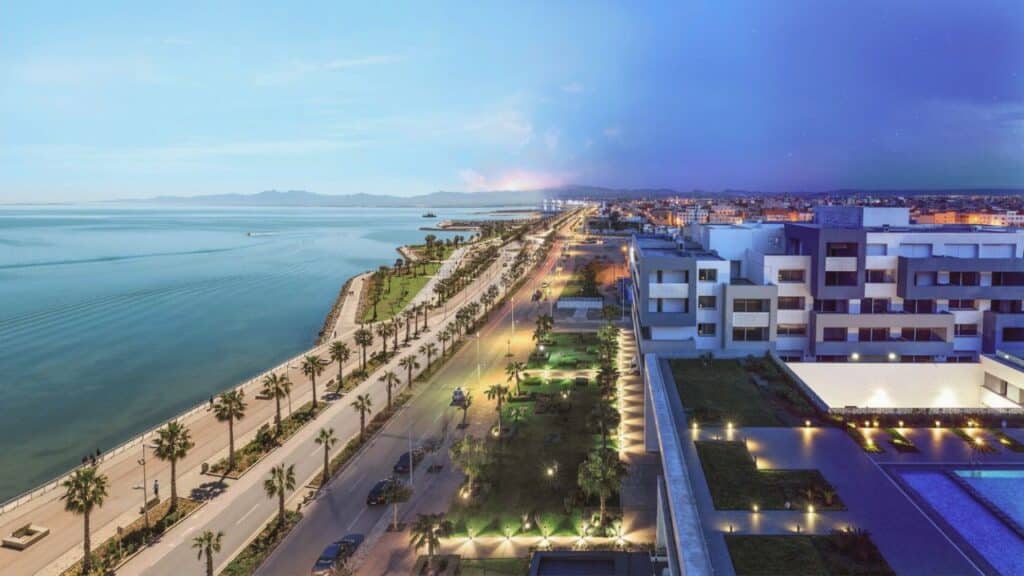
Do you know the high number of people living in Nador ? 4,980 people live in each square kilometer. This town is in the heart of the Rif, near the sea, but it is not often visited.
In 2020, it had 178,540 inhabitants. Nador therefore becomes a great place of interest and activities in Eastern Morocco. Its Marchica Lagoon is famous. It is a huge body of water near the sea, which helps the nature around.
There is a lot of Rif culture in Nador . This is seen in the delicious food and traditional festivals. Nador also has a very important airport, more used than that of the neighboring town, Oujda .
A new port, Nador West Med , is under construction. When it’s finished, it will make Nador even more useful as a place for boats.
Nador is not only a place of habitation, but an active place with several factories. There are many ways to get around thanks to Vectalia Nador. It makes life and traveling easier.
Whether you like nature or business, Nador has something to interest you. It is a beautiful place to discover on the edge of the Mediterranean .
Laayoune
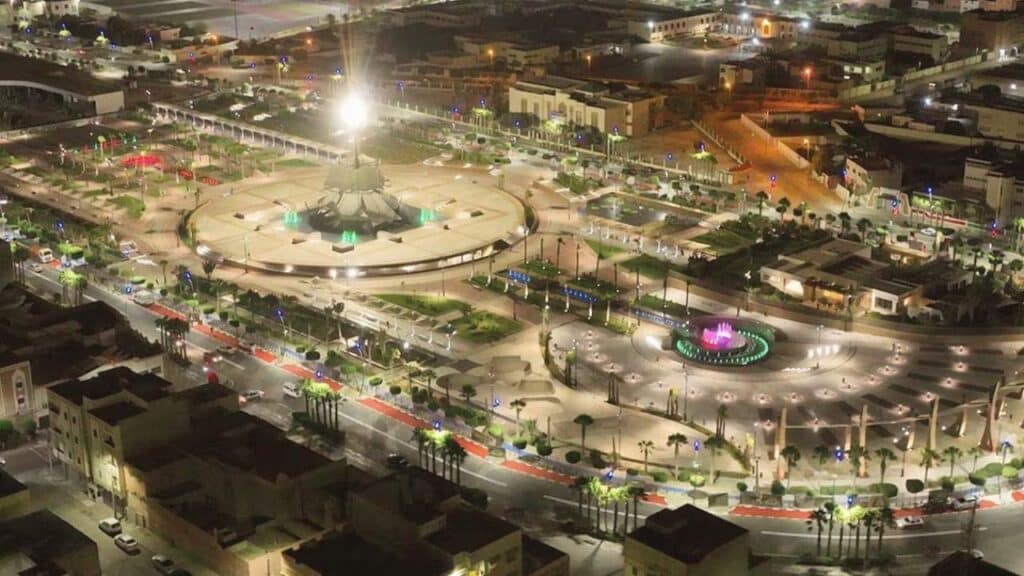
Laayoune is unique with only 2.6 inhabitants per square kilometer. In 2014, 367,758 people lived there. It is in the heart of Western Sahara .
It is located at 26°26’24” north, 12°33’00” west. With 1.1% of the country’s population, Laayoune shows great urban development .
The Sahara region has received large investments from the state. This boosted the economy and improved infrastructure. There is a modern administrative square and a direct link with the Mohammed V airport in Casablanca.
Laayoune is an important place for culture and sport. She has organized events like the Africa Cup of Nations in Futsal. There is also the International Marathon.
The Phosboucraa industry, from the OCP group, is essential for the city’s economy. It contributes a lot to its growth.
Laayoune is also known internationally. It is twinned with famous cities like Florence and Hollywood.
Oujda
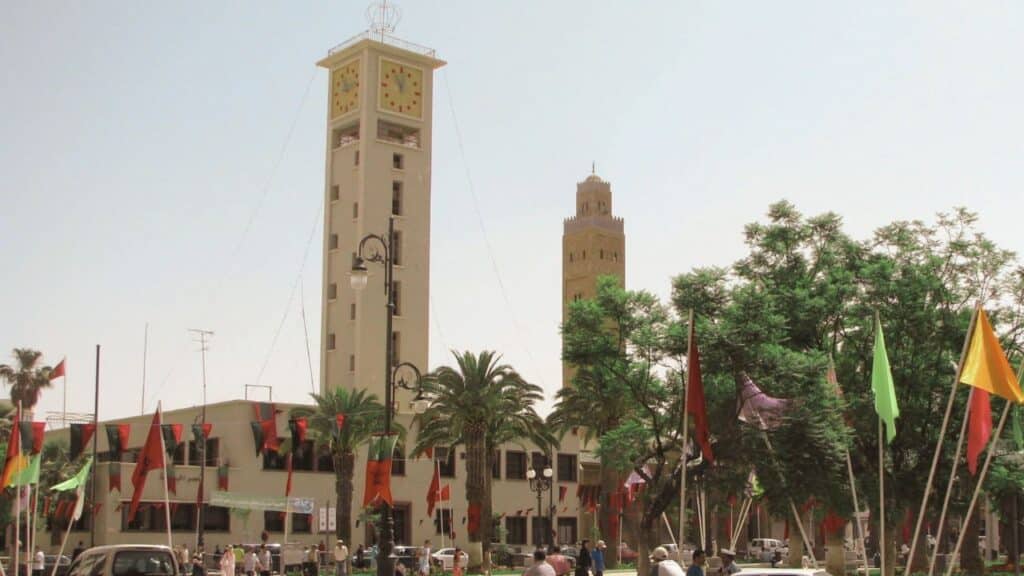
Oujda is one of the most populated cities in Eastern Morocco, with 7,475 inhabitants per km². It is a vibrant border town , founded in 994 by Ziri Ibn Atiya. Oujda is known for being a mixture of varied cultures and histories.
Near Algeria, Oujda charms with its Arab past and its craftsmanship inherited from generations. Today, it has 720,618 inhabitants and covers 96.4 km². Its nature offers a great diversity of biotopes and bioclimates.
Oujda has a pleasant climate , with average temperatures between 15°C and 20°C throughout the year. But sometimes, the maxima rise very high, like at 46.2°C in 2001. In winter, it can be very cold, down to -7.1°C in 2005. It receives between 350 and 500 mm of rain each year, which is good for its nature.
The city is the capital of Oriental Morocco. Its history is rich, from the time of the Almoravids to the French occupation. Since 1999, with the new King Mohammed VI, Oujda has really evolved. Many projects have seen the light of day, improving the lives of residents.
Oujda mixes tradition and modernity. It is developing with new highways and a major airport. There is also a large hospital and a medical school. The city also supports culture, with several centers and museums.
There is a festival in Oujda on Raï music which started in July 2007. It has become a tradition that attracts people from all over the world and locals.
Taza
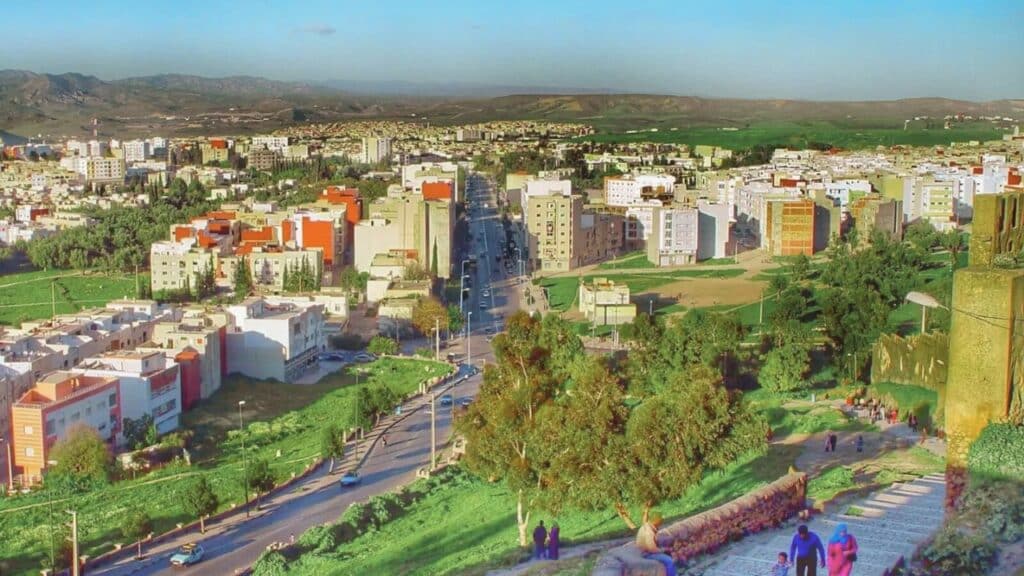
Taza is famous for its 55% industrial companies in its region. This makes it a key point for the economy. Located between the Rif and Atlas mountains, this city shines for its location. It has 152,678 inhabitants and a density of 4,126 inhabitants per kilometer in 2024. Its climate varies greatly, from 14.4°C in January to 34.9°C in July.
It is also rich in natural beauty, such as the Chiker caves , and in history. Old neighborhoods recall its illustrious past with the Idrissids, Meknassa, Almoravids, Almohads, and Merinids. Taza offers good accessibility via its transport network to major cities. This promotes cultural and economic exchanges.
Taza is modernizing, moving from its historic medina to neighborhoods such as Massira and Quds. Despite these changes, its urbanization remains modest at 55%. Agriculture is a key pillar, with 29% of regional farms located here. They focus on small-scale agriculture.
New actions, such as industrial zones, could create 2,500 new jobs. This would make Taza a booming city. Experiencing Taza offers a journey between the glorious past and the evolving present. It is a testimony to the history and innovations of this city.
Taroudant
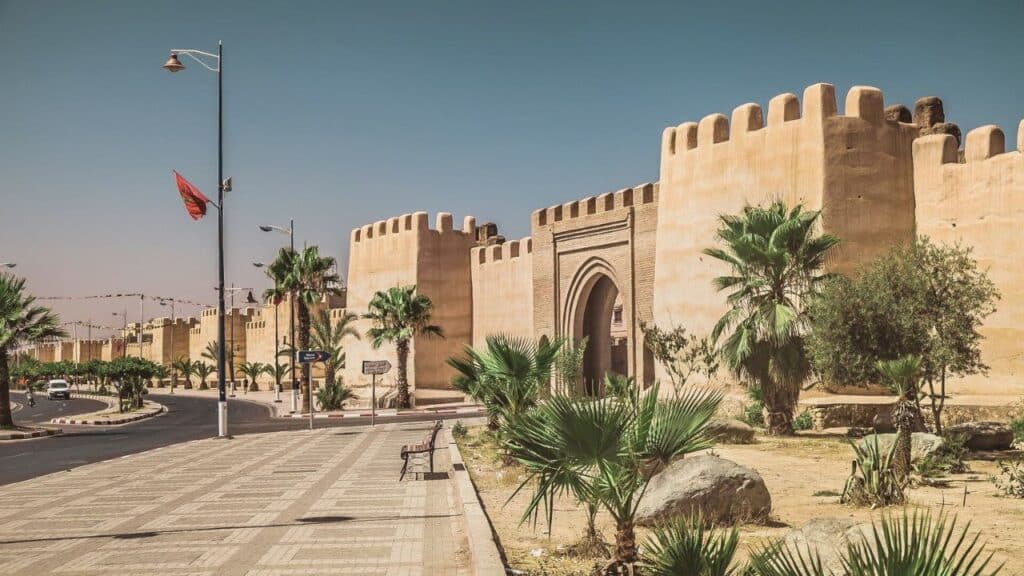
Taroudant is a very lively town. It has 91,800 inhabitants (2020) and is located in the Souss valley. This area is between the High Atlas and the Anti-Atlas. The city is famous for its traditional atmosphere and its souks .
The ramparts of Taroudant are impressive. They have 130 towers and 19 bastions. This city was once the capital of the Saadians.
People come here for its history and vibrant markets. There you can find local products like argan oil and olive oil. The landscapes are magnificent.
Taroudant is an important industrial location. There is a large industrial zone and agricultural cooperatives. The city is modernizing. For example, a new highway will soon connect Agadir to Marrakech. This will make traveling easier.
The climate in Taroudant is hot during the day and cool at night. It is a Moroccan destination rich in experience.
Errachidia
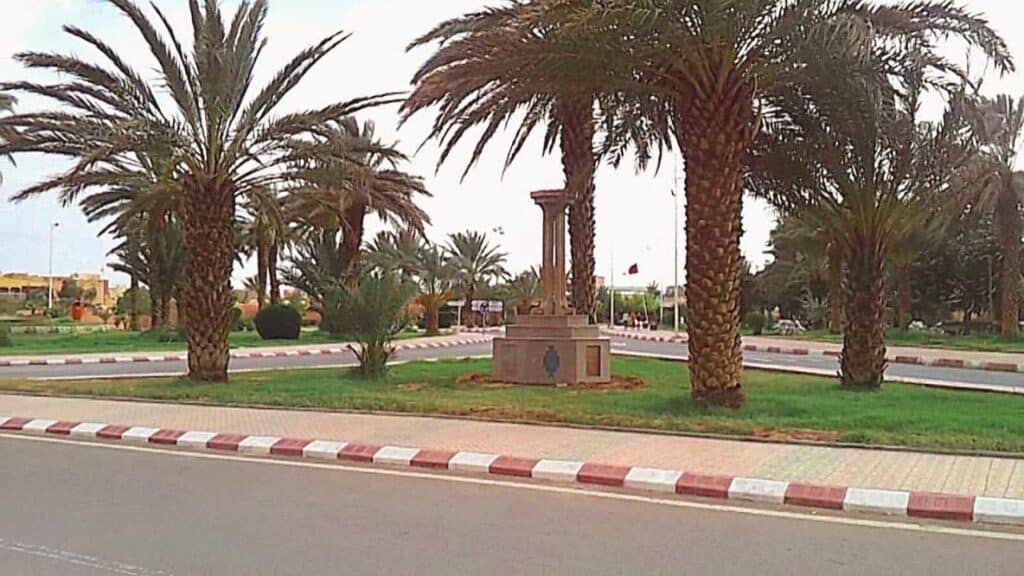
Errachidia is a rich city of 92,374 inhabitants in 2014. It is located at coordinates 31° 55′ 55″ north, 4° 25′ 28″ west. Known as the “gates to the desert”, it is a perfect place to explore the Sahara.
The town is surrounded by palm trees and located in the Ziz Valley . It is a dream place for nature lovers. You can go there by car via national road 10 or by plane from Casablanca.
Errachidia has several neighborhoods like Center-ville, Ain El Ati 1 and 2, and Lahdeb. It is also an important place of learning, with schools such as the Polydisciplinary Faculty.
The beauty of Errachidia attracts nature lovers. With its dunes and mountains, it is an ideal place for excursions. The Drâa-Tafilalet region, where the city is located, is populated by more than 1.6 million inhabitants. This makes it a key area of Morocco.
Errachidia is a city rich in culture and perfect for adventure or study. It offers a unique experience in the Moroccan desert.
Azrou
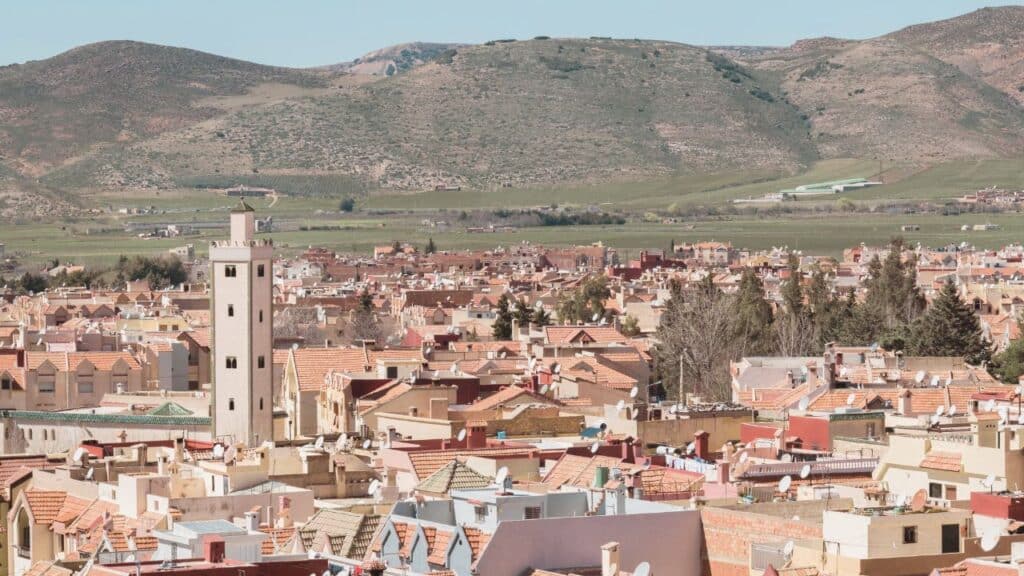
Azrou is located at 1,330 meters above sea level. It has approximately 84,895 inhabitants. Each year, the average temperature ranges from -1.4°C to 29.5°C. Surrounded by the Atlas Mountains , this region is famous for its cedar forests . These forests are among the largest in Morocco. They offer a great adventure in nature.
It is a quiet place and full of cultural life. Berber artisans are famous here for their work. Azrou also has strong links with Blois (France) and Melle (Deux-Sèvres, France).
In the souks you will find lively markets. Goods are exchanged there with joy. For nature lovers, Azrou offers great activities. Like hiking, mountain biking, and horseback riding.
Come visit Lakes Dayet Aoua and Dayet Ifrah to relax. These lakes are perfect for picnics and bird watching. You will also see Barbary macaques there, which makes the place even more special.
It’s easy to get to Azrou from Fez and Meknes. There are a variety of accommodations, from simple guesthouses to luxury lodges. Efforts for sustainable tourism are present there. Come discover Azrou for an authentic adventure in the Atlas Mountains .
Ifrane
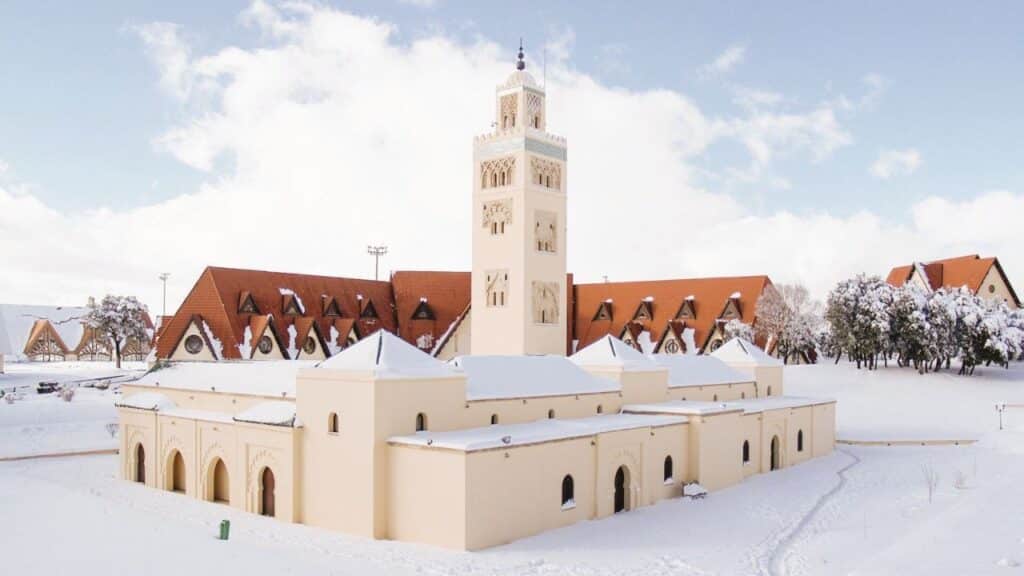
Do you know Ifrane ? It has only 15,553 inhabitants in 2020. However, it is one of the highest cities in Morocco, at 1,664 meters. It is called “Little Moroccan Switzerland” for its architecture and red roofs.
The Michlifen ski resort is very popular in winter. It attracts those who love winter sports. This place contrasts sharply with the traditional landscapes of Morocco. Ifrane has an average annual temperature of 11.4°C. But cold records are possible, such as -23.9°C on February 11, 1935.
Al Akhawayn University was established in 1993. It makes Ifrane very international, with more than 40% of staff coming from abroad. Ifrane and its region have the Ifrane National Park. It is also where we find the largest cedar forest in the world. It creates magnificent landscapes and a great diversity of species.
Ifrane sees a lot of sunshine, with 2,832.5 hours per year. This allows it to combine natural beauty, calm and rich cultural heritage . It is a top destination for a cultural trip to Morocco.
Dakhla
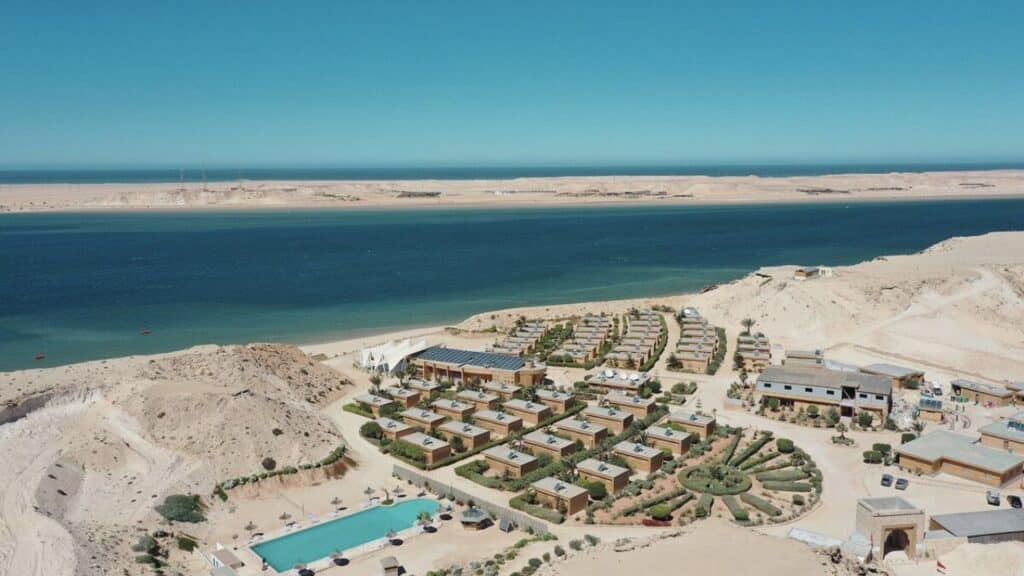
Did you know that Dakhla has a population of 106,277 inhabitants in 2014? This area only receives about 33 mm of rain per year. Despite this, it is a paradise for water sports like kitesurfing. Around 3,000 water sports tourists visit Dakhla each year. They come to enjoy its perfect conditions and five kitesurfing schools.
Dakhla is located on a peninsula, surrounded by the Atlantic Ocean. It is known for its magnificent bay of 400 km². This region is essential for many birds. It is an internationally recognized conservation area.
Dakhla has an economy that moves a lot thanks to its two ports. One belongs to the Royal Navy, and the other is used for fishing and business, the port of Dakhla-Ville. Local businesses, such as Dakhla Fish and La Perle de Dakhla, are thriving there. They make the region famous in the seafood industry.
The region is also famous for its agriculture. It produces a lot of tomatoes, melons and fodder. Dakhla is well served, with two daily flights to Casablanca. This facilitates trade and tourism.
Dakhla has twinnings with towns like Minna in Nigeria and Creil in France. It mixes cultures, with 10% of residents speaking Spanish and 6% speaking French. The place offers a unique combination of deserts, beaches and modernity. This creates unforgettable travel memories.
Khouribga
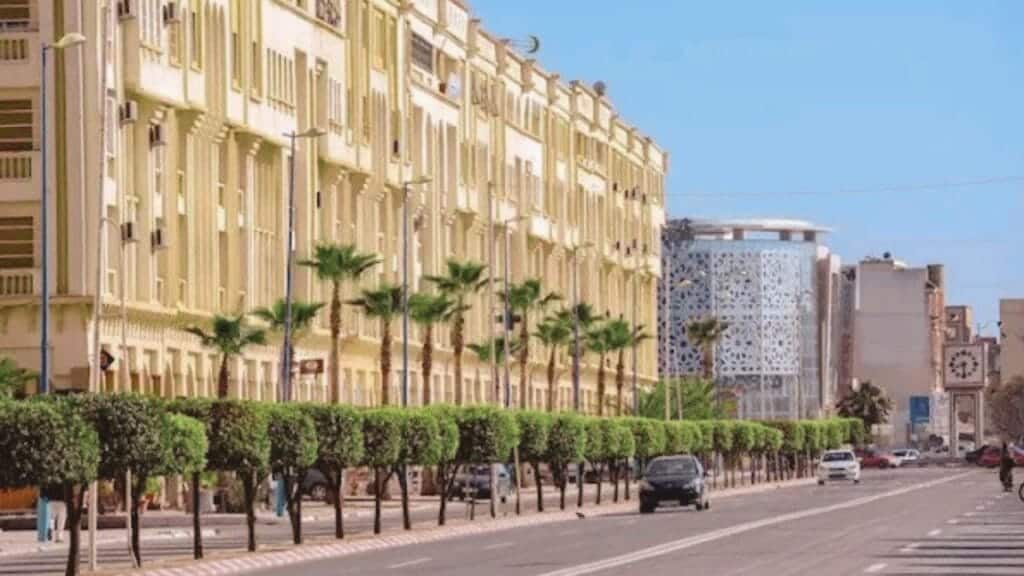
Khouribga is a town with 216,828 inhabitants in 2014. It is characterized by its high density of 4,170 people per square kilometer. This city is located at 32° 53′ 00″ north, 6° 54′ 00″ west, in Morocco. It is an active urban center and a leader in the phosphate industry. This industry is very important for the country.
Khouribga became known as the largest phosphate deposit in the world, a recognition between the time of the French protectorate and independence. Since then, the city has grown a lot, both in number of inhabitants and economically. In 2014, it had 342,125 residents.
Moroccan author Mohammed Sahsah wrote about Khouribga in his book “Khouribga, Genesis of a Mining Town”. It is an interesting read for people who love history, urban planning, and for everyone. It shows how Khouribga has transformed. The city mixes tradition and modernity well thanks to its phosphate industry.
Beni Mellal
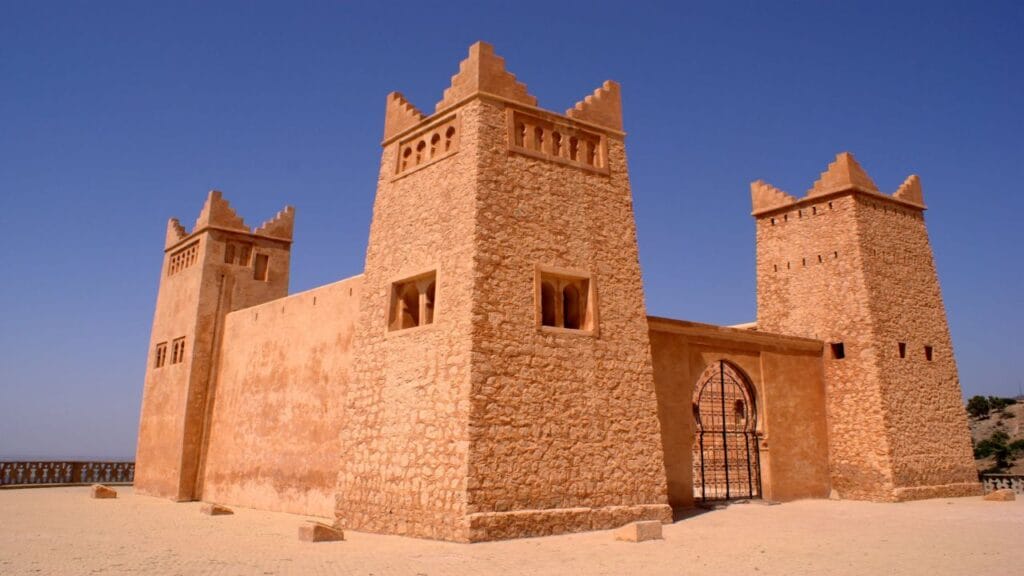
Did you know that Béni Mellal has very cold winters and extremely hot summers? It can be -6°C or 47°C depending on the season. This city is surrounded by the Atlas Mountains and welcomes a wide variety of people.
You will find the famous Ouzoud waterfalls in Béni Mellal. These falls are among the most beautiful in Morocco. They attract many visitors from all over the world thanks to their spectacular natural environment.
Béni Mellal is at an altitude of 480 to 620 meters. Every year it receives around 493 mm of rain. This makes the region very suitable for agriculture. The mountains surrounding the city add to its natural beauty.
al Hoceima
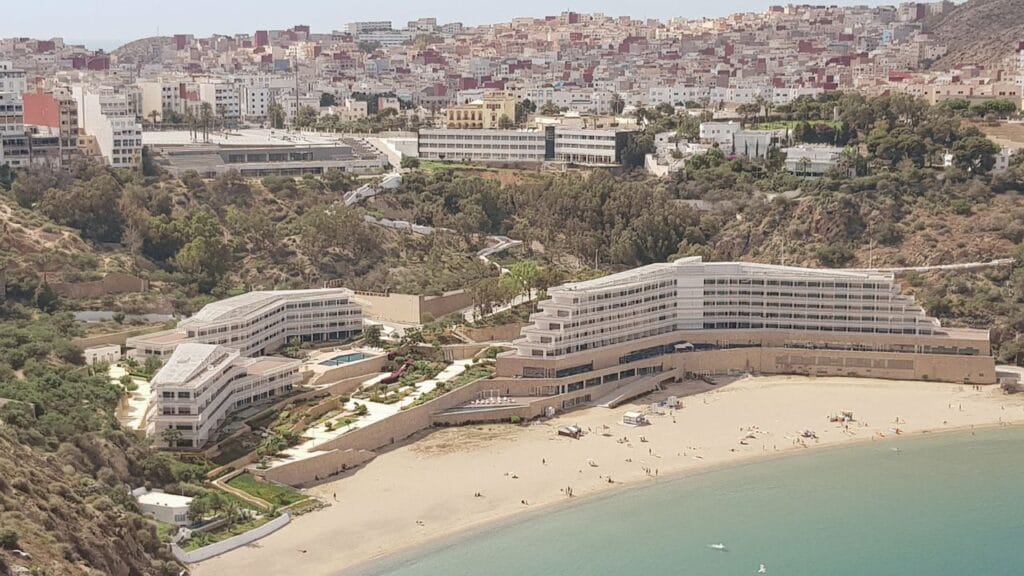
Al Hoceima has a fascinating feature: its population triples in the summer. This is thanks to the return of expatriates and the arrival of tourists charmed by its beaches and the National Park. This city is located in the Rif Mountains, 291 km from Tangier, near the Mediterranean .
In summer, its beaches like Cala Iris and Quemado attract a lot of people. In Al Hoceima is the National Park covering 47,000 hectares. It is a magnificent place, with cliffs and great marine biodiversity, ideal for nature lovers.
The place is quiet and the climate pleasant , making it a popular destination all year round. The temperature varies between 17°C and 35°C in summer and 5°C and 15°C in winter.
Al Hoceima has a unique history. Founded by Spain in 1920, it still retains its heritage. Visitors can discover local crafts or simply appreciate the beauty of the Mediterranean beaches .
Explore the history and wonders of Al Hoceima. Discover its national park and its magnificent beaches for a memorable getaway.
Berkane
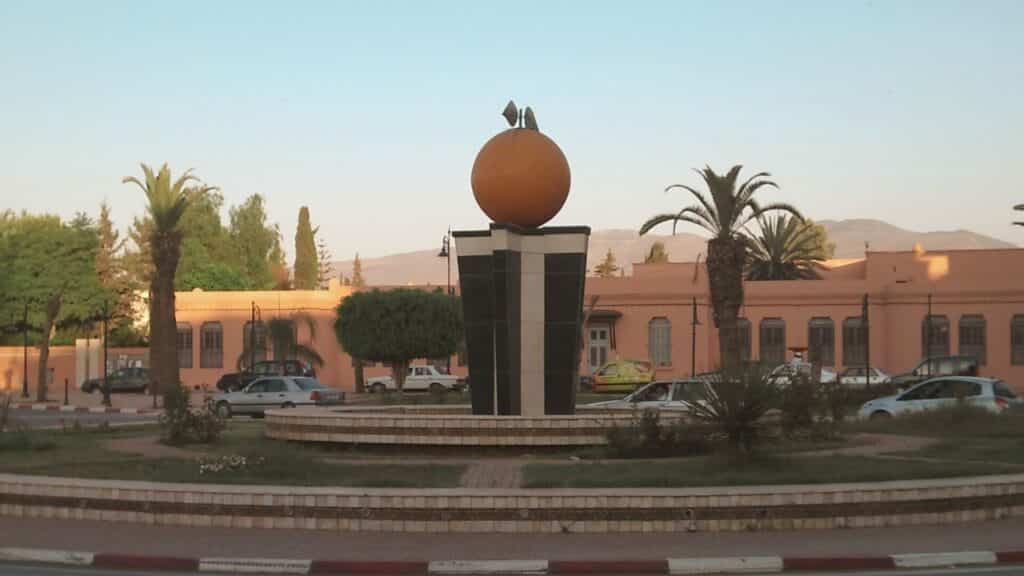
Berkane is a place known for its agriculture, particularly for its quality citrus fruits. This city is located in the Moulouya Valley , Morocco. In 2014, the Oriental region, with Berkane , had more than 2 million inhabitants. This represented 6.8% of the Moroccan population.
The region is mainly urbanized, with 67% of its surface area thus developed. It is also well connected by trains to other important cities such as Oujda and Nador. These links help trade and transport local products.
Berkane ‘s attractions include a vibrant agricultural economy and varied local products. The city also benefits from its proximity to the Marchica Lagoon . In addition, recent improvements, such as the Port of Beni Nsar, have boosted the economy and tourism.
The region also has natural gems, such as the very refreshing thermal spring of Fezouane. Around 10,000 people come to admire it every year. These visitors seek the health benefits of its waters.
Thanks to its famous citrus fruits and beautiful views, Berkane is more than just a place for agriculture. It is an invitation to taste the flavors and discover the natural beauties of Morocco.
Zagora
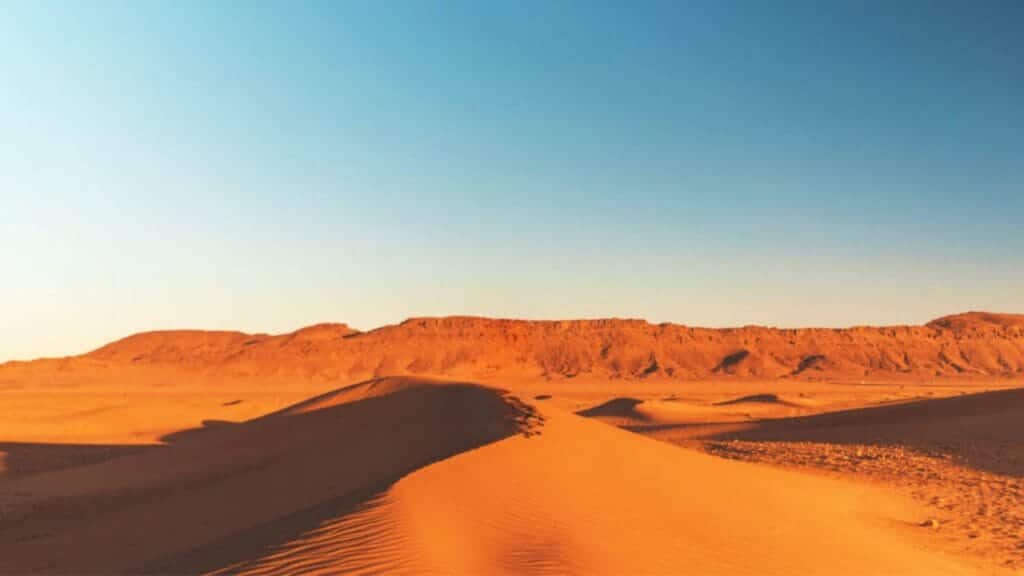
Did you know that Zagora covers 2,180,307 hectares? It’s huge! This is where the desert begins, nicknamed the *gate to the Sahara*. It is also the starting point for the Dakar Rally .
350 km from Marrakech and 160 km from Ouarzazate, Zagora is easy to access. Every year, thousands of visitors come. They discover its landscapes, its *nomadic cultured sand*, and special places like the dunes of Chegaga and Tinfou.
On December 31, a marathon attracts nearly a thousand people to Zagora . This adds to the beauty of the place. But for a better visit, choose fall or spring. Summer is very hot.
Zagora has unique gems like Tamegroute and its knowledge, or the Fibula of Drâa and its kasbahs. A trip to Zagora is a journey through time. It’s discovering a deep and captivating *Morocco*.
Tiznit
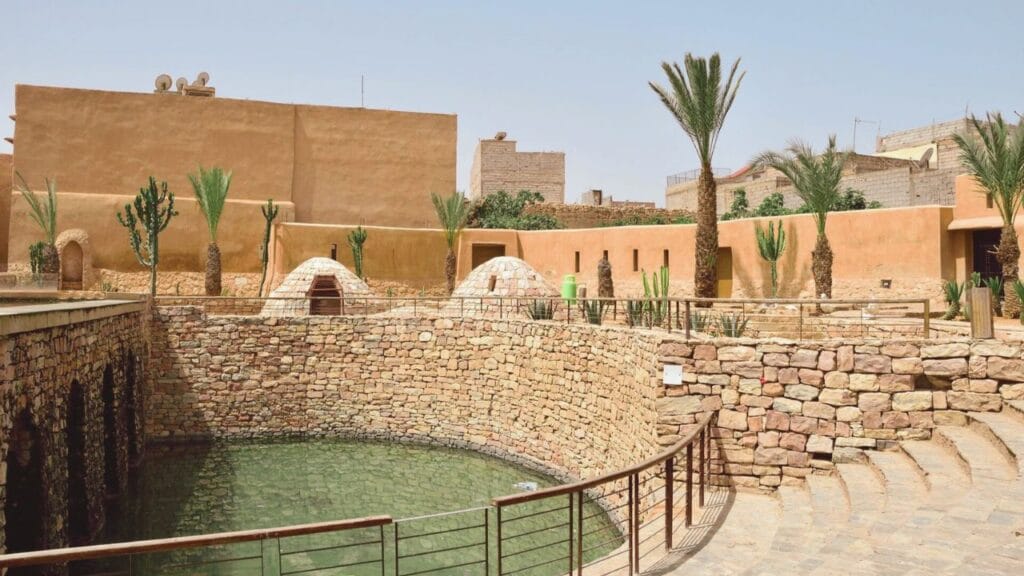
Tiznit is also known as the “Capital of Money”. It has around 95,000 inhabitants in 2023. This city is located near the Atlantic, at a certain latitude and longitude. This is a place where beautiful silver jewelry is created.
Tiznit is famous for its ancient walls. These ramparts are seven kilometers long and eight meters high. In addition to its jewels, the city is rich in ancient architecture.
It is also known for its sporty side. Tiznit has an Olympic-sized swimming pool and a modern multi-sports hall. There you will find cycling and chess teams.
When it comes to culture, Tiznit offers a lot. Important figures lived there, such as Latifa Jbabdi. The city has historic districts, a blue spring, and ancient gates. It’s perfect for discovering Berber culture and its crafts.
Come visit its Grand Mosque and its markets. They offer unique silver jewelry . Tiznit is also known for its pleasant climate . The city attracts curious travelers from all over the world.
Tata
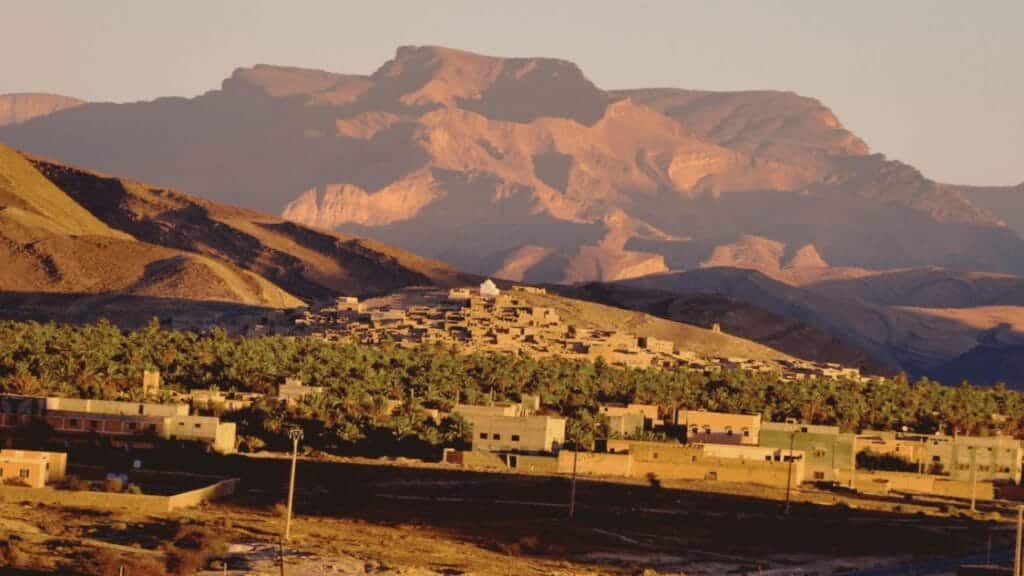
Tata , an ancient oasis, began thanks to the Almoravids in the 11th century. This city in southern Morocco is rich in history, with its oases and rock carvings . The Sâadian Sultan Ahmed El-Mansour Dahbi reinforced Tata , making it a fortress in the 16th century. He did it to conquer Sudan. Today, those who visit Tata can feel this heritage as they experience its beautiful desert and historical places.
Tata is famous for its Assif Tata cliffs and pleasant sunny weather. Right next door, the Messalite caves hide ancient secrets that captivate. The town also has an old mosque from Almoravid times. This adds to its rich past.
A great effort is being made to bring life back to 80 hectares of palm trees. A new economic plan was also launched. Morocco relies heavily on solar energy, which helps Tata. Thus, Tata becomes a place that attracts lovers of deserts and stories. But it is also an example of innovation and environmental protection.
Boujdour
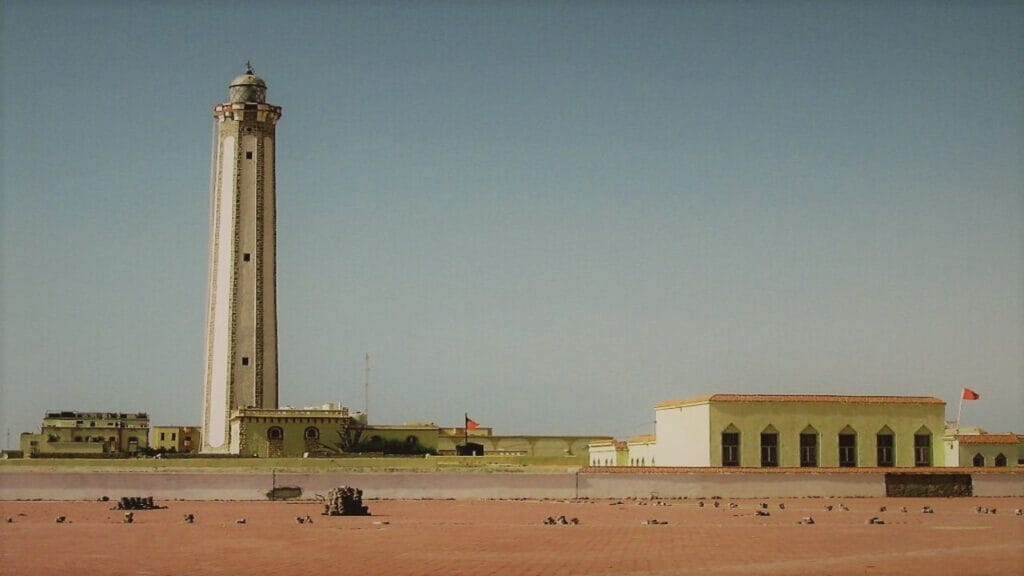
Boujdour is located on the Saharan coast and is part of Laâyoune-Sakia El Hamra. This region has four provinces. It is not very populated, with only 590 inhabitants. Most people belong to the Ouled Tidrarin tribe.
The region has a low population density, as is often the case in the desert. There are approximately 2.6 people per square kilometer. This area covers 140,018 square kilometers.
An astonishing thing is that Laâyoune-Sakia El Hamra represents only 1.1% of all inhabitants of Morocco. This is explained by the total number of 367,758 people in 2014. This situation helps to understand medium and small sized cities in Morocco.
The history of Boujdour is explained through censuses and studies. For example, the 1994 census and a 1997 database helped. This research shows that Boujdour is important for regional development.
After 1976, the town of Boujdour saw increasing tribal diversity. This was due to nomads gathering after recovery by Morocco. This diversity makes Boujdour culturally rich and plays an important role socially in Western Sahara .

